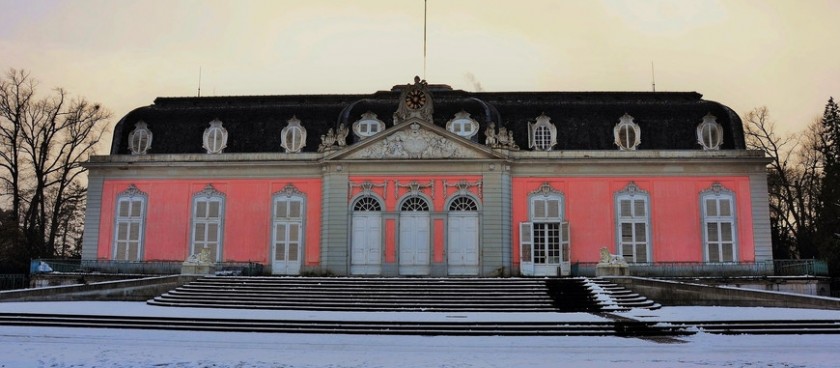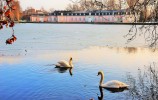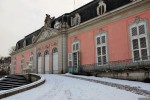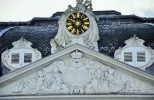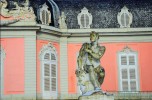- #DE60
- Benrather Schloßallee 100-108, 40597 Düsseldorf, Germany
- +492118921903
- info@schloss-benrath.de
- https://www.schloss-benrath.de/
- Working hours*:
Tue and Fri 11:00, 12:30, 14:00, 16:00;
Wed and Thu 14:00, 16:00;
Sat-Sun 11:00, 12:30, 13:30, 14:00, 16:00, 17:00. - Prices*:
14 €,
concessionary - 10 €,
children 6-17 years old - 4 €,
up to 6 years old - free - * - opening and closing times as well as entrance prices, are subject to alterations without notice. Visitors are advised to check before visiting.
- weddings take place in the morning
- 51.1610331, 6.8705472 Copy to clipboard Copy
-
#Castles
The idea for the construction of this magnificent palace belongs to the Elector of the Palatinate and Bavaria. The castle conceived as a place to relax from pompous luxury and palace bustle and therefore it was erected to create a secluded structure that harmoniously merged with the natural landscape. An architect from France, Nicolas de Pigage, perfectly coped with this idea. It is for this reason that the building is considered an example of French architecture of the 2nd half of the 18th century. rococo.
The castle got its name from the name of the place where it is located: Benrath is the southern district of Dusseldorf. The palace is located on the banks of the Rhine and looks amazing in this picturesque place.
The story goes that once during his reign, Karl-Theodor, Elector of the Palatinate and Bavaria, inspected his possessions and arrived in Dusseldorf. Here, on the banks of the Rhine, he noticed the fortifications of the 17th century, dilapidated from time and fire. The building stood for thirty years empty and deserted and looked very unpresentable, but the elector liked this place - picturesque and quiet. He wished to build his residence here.
The landscape architect N. de Pigage, invited from France, quickly understood what was required of him, and already in 1755 construction work began. They lasted for 15 years. Construction was greatly delayed due to the outbreak of the Seven Years War.
The protracted process of building the residence became the reason that the palace, originally conceived in the pretentious rococo style, gradually began to acquire certain features of classicism, which began to come into fashion at that time.
The author of the project, de Pigage, was able to combine into a single ensemble the architecture inherent in the Age of Enlightenment, painting, sculpture and even a garden landscape. As a result, the complex turned out to be harmonious and admirable.
The main building has the form of a pavilion with adjacent wings. The square park opens directly to the river. There is a pond near the palace.
The elector's quarters were placed in the palace, and there was also the room of his wife. The retinue lived in outbuildings. The western wing was given to the kitchen, and an underground tunnel connected it with the main palace. In the greenhouses located south of the main building, exotic plants grew. Now they house a library. There was an artificial canal on the territory of the garden but in the 19th century. it was partially covered.
The park project was also created in the style of the French classics: the alleys fanned out from the centre (palace). However, fashion is changing, and the park has also been modified. As soon as the English layout became popular in the 19th century, the garden was partially altered.
The park project was also created in the style of the French classics: the alleys fanned out from the centre (palace). However, fashion is changing, and the park has also been modified. As soon as the English layout became popular in the 19th century, the garden was partially altered.
The palace building is full of hidden corridors, secret staircases, and other "secret" passages. However, all this was not invented for the sake of conspiracy, but solely for the purpose that the servants did not interfere with the owners and their guests, quietly moving around the house on necessary matters.
The interior of the castle is full of beautiful and expensive items. Here you can admire graceful sculptures, magnificent paintings, chic paintings, quirky furniture. Subjects such as hunting, harvesting, seasons and many others may be of interest.
Today, the castle has several museums of different themes (park art, natural history, etc.). Exhibitions are often held here, excursions to the interior of the palace are organized.
How to get to Benrath Castle
Subway Schloss Benrath - U71, U74, U83
Bus Schloss Benrath - 817, NE7
